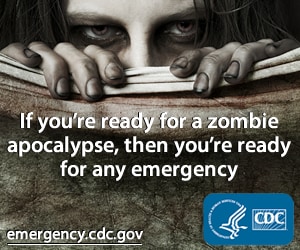I'll be attending the Great Los Angeles Air Raid of 1942 at Fort MacArthur on Saturday, and rather than go in one of my 40's dresses and hats, I decided to give myself a little challenge: go as a WAC.
Now, most of you reading probably have never heard of WAC's, and if you have, you may not know much about them. By the end of WWII, there were only around 95,000 WAC's, which represented a small percentage of those serving in the Army as a whole. But, there had never before been a Women's Army Corps, and every battle fought was a battle won.
The idea of women in the war was first introduced by Congresswoman Edith Nourse Rogers in 1941. It was largely ignored, and she reintroduced the bill in 1942, to scorn, anger, and ridicule. Her amendment suggesting military status for women serving faced especially harsh criticism from a mostly male Congress. They just couldn't conceive of women wanting to serve in the military.
However, it was soon realized that the Army needed women to relieve men who were going to fight overseas. In spite of all the many objections, the Women's Army Auxiliary Corps was formed in May of 1942. The WAAC received its own auxiliary military grade and their regulations were patterned after those of the army. But there were almost immediate problems with the lack of any real military status. WAAC's were paid less than half what their Army counterparts made and drew no overseas pay, and they had no protections if they became sick or were injured or captured. It took until July of '43 for the WAAC to be brought fully under Army jurisdiction, and that came at still more criticism and outcry. Still, on July 3 1943, the WAAC became the Women's Army Corps, or WAC. Auxiliary ranks were transferred to Army ranks, with the restriction that no WAC could ever rise above the rank of colonel, or have men under her command.
There were lots of restrictions and quite a bit of persecution for the WAC during the war. Uniforms were poorly designed and often ill-fitting, and new requisitions slow to come with women wearing the wrong size shoes or jackets often for months. Women could not, under any circumstances, serve in combat, and could not display any combat insignia on their uniforms. On top of this, a smear campaign was started in 1943 suggesting that WAC's were of low or questionable moral character, and this was picked up by the civilian arena and the collective consciousness. A WAC was up against quite a lot in order to serve in "This Man's Army".
In spite of difficulties, however, WAC's served and served well. By the end of the war, WAC Director Oveta Culp Hobby received the Distinguished Service Medal. Sixty-two WACs received the Legion of Merit, awarded for exceptionally meritorious conduct in the performance of duty.Three WACs received the Air Medal, including Sgt. Henrietta Williams, assigned to an aerial reconnaissance mapping team in the China-Burma-India theater. Ten women received the Soldier's Medal for heroic actions (not involving combat). One such incident occurred at Port Moresby, New Guinea, when an oil stove in the women's barracks caught fire and three WACs brought the fire under control by smothering it, sustaining severe burns in the process. Sixteen women received the Purple Heart, awarded during World War II to soldiers injured due to enemy action. The Bronze Star was awarded to 565 women for meritorious service overseas. A total of 657 WACs received medals and citations.
I look forward to portraying a Second Lieutenant on Saturday, and I intend to keep researching the WAC. Do your own research here:
Blitzkrieg Baby
History of the WAC


































2 comments:
My grandmother is part of WAC and she stands proudly behind that (as well do I) Every year she attends the WAC convention and keeps great touch with many of the other women who were all involved in WAC. I'd love to attend the convention with her one day but work always gets in the way. I can't wait to see your photos from this event!
I love that you are portraying a little known part of our amazing history! I have papers of my great-grandmothers that thank her for her service to the country during both wars. I hope you have a blast!
Post a Comment